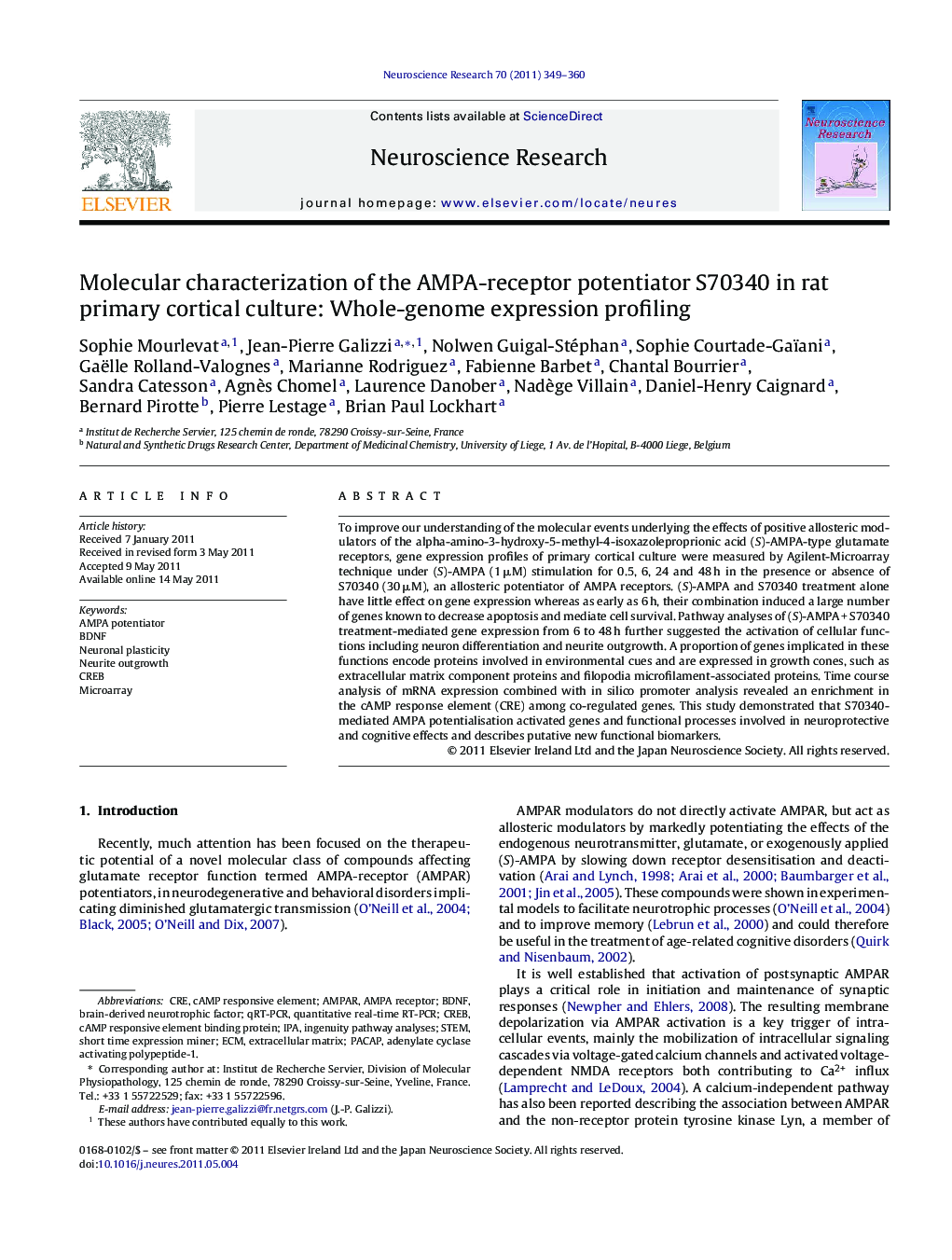| Article ID | Journal | Published Year | Pages | File Type |
|---|---|---|---|---|
| 4351545 | Neuroscience Research | 2011 | 12 Pages |
To improve our understanding of the molecular events underlying the effects of positive allosteric modulators of the alpha-amino-3-hydroxy-5-methyl-4-isoxazoleproprionic acid (S)-AMPA-type glutamate receptors, gene expression profiles of primary cortical culture were measured by Agilent-Microarray technique under (S)-AMPA (1 μM) stimulation for 0.5, 6, 24 and 48 h in the presence or absence of S70340 (30 μM), an allosteric potentiator of AMPA receptors. (S)-AMPA and S70340 treatment alone have little effect on gene expression whereas as early as 6 h, their combination induced a large number of genes known to decrease apoptosis and mediate cell survival. Pathway analyses of (S)-AMPA + S70340 treatment-mediated gene expression from 6 to 48 h further suggested the activation of cellular functions including neuron differentiation and neurite outgrowth. A proportion of genes implicated in these functions encode proteins involved in environmental cues and are expressed in growth cones, such as extracellular matrix component proteins and filopodia microfilament-associated proteins. Time course analysis of mRNA expression combined with in silico promoter analysis revealed an enrichment in the cAMP response element (CRE) among co-regulated genes. This study demonstrated that S70340-mediated AMPA potentialisation activated genes and functional processes involved in neuroprotective and cognitive effects and describes putative new functional biomarkers.
► Study of an AMPA-receptor potentiator (S70340) using transcriptomics-based approach. ► (S)-AMPA + S70340 activated genes involved in neuroprotective and cognitive effects. ► Functional pathway analyses suggested the activation of neuronal neurite outgrowth. ► In silico promoter analysis of time course regulated genes. ► Important role of CREB mediating gene regulation.
